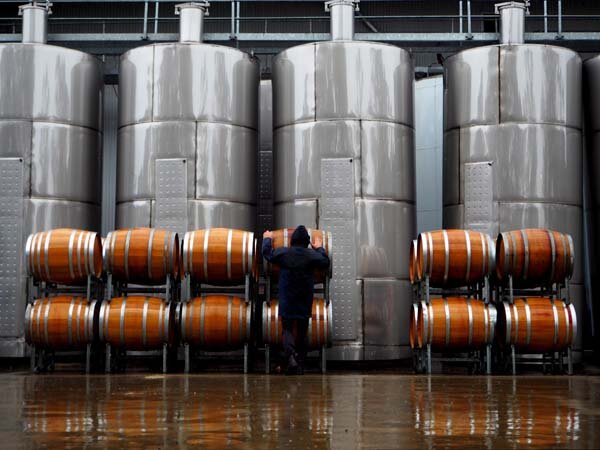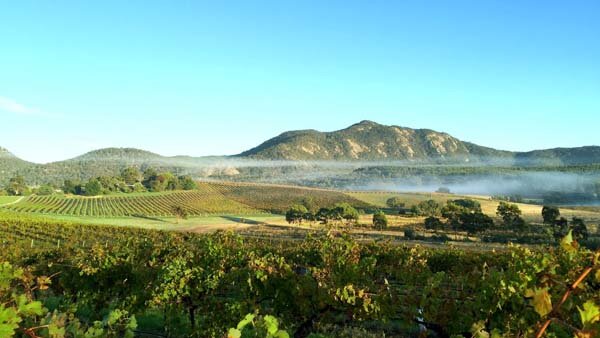Australian Wine Down Unda the Radar: Cool-Climate Shiraz
In the past few years, Australia has been fighting a lot of preconceived notions about their wine. Wines like Yellowtail have given rise to the idea that Shiraz produced in Australia can only be one thing: big and jammy with more than their fair share of alcohol and sugar. That is to say, many people assume that Australia only makes big boring wines with gobs of fruit and nearly nothing interesting to say. And to be fair, those wines are for sale within the United States. You can walk into nearly any grocery nationwide and find a cheap Aussie Shiraz designed for mass appeal, made in a facility with 1000L stainless steel tanks having travelled through miles of conduit pipe from press to the bottle.
Yet, like any country that has been producing wine for nearly two centuries, the Australian wine landscape is so much bigger than the handful of low-cost plonky bottles that are readily available throughout the U.S. market. There is soft, complex, and aromatic Pinot Noir from the Yarra Valley; structured and refined Bordeaux blends from Margaret River; and lively sparkling wines from Tasmania. The diversity of offerings in Australian wine is profound. But when interacting with our customers who are curious about these wines, the first thing I love to introduce people to is cool-climate Shiraz.
I like recommending cool-climate Shiraz because it serves as such a dramatic counterpoint to the ideas most of us have about Australian Shiraz—and because it’s a delicious, complex, and compelling category of wine that is under nearly everyone’s radar. First of all, there are not too many places that have the climate in Australia to produce it. You need a marginal climate, influenced by either the ocean or high altitude, or both.
Victoria is the perfect place to start. With cool arctic flows through Port Phillip Bay, this region sits at moderate altitude in the Pyhrenees range west of Melbourne. Here, limestone-rich soils produce wines that have smooth tannins and medium body with a bright punch of acid. Red and purple fruit notes are abundant in these wines, along with a characteristic spicy note. A great example is the 2017 Mount Langi Ghiran "Cliff Edge" Shiraz Grampians ($19.99). It’s bursting with red plum, cassis, and rosemary aromatics. This is an agile, wonderfully bright expression of Shiraz that, in some ways, bears more resemblance to Pinot Noir than the big, bulkier Shiraz of Barossa. This is a beautiful demonstration of Grampians’ cool-climate effect on Shiraz.
The tiny sub-region of Great Western was established as a subzone of Grampians in 2007, but wine production here dates back over a century and a half when Best’s was founded in 1865. The limestone soils and chilly climate convinced early winegrowers that they could make sparkling wine in the style of Champagne, but today nearly 90% of this subregion is dedicated to Shiraz. The 2016 Best's "Bin No.1" Shiraz Great Western Victoria ($22.99) has a lot in common with the Ghiran Langi—powerful acidity and focused fruit. But the limestone soils give this a darker edge with more concentrated black fruit flavors of plum, black tea, and black cherry notes. For a winery that has been established for over 150 years, this is strikingly modern, clean, and full of distinctive edges. The tuxedo of Shiraz.
A few hundred miles to the northwest, and backed up into the hills of the Mount Lofty Ranges to the east of McLaren Vale, you’ll find the Adelaide Hills. The primary influence here is altitude, where vineyards can reach up to 2300ft in elevation, leading to cool nights and warm days during the ripening season. Here, you can find Shiraz grown side-by-side with cool-climate varieties you wouldn’t expect, such as Pinot Noir and Sauvignon Blanc. Remarkably distinctive from the hedonistic, power-wines of the neighboring McLaren Vale, Adelaide Hills Shiraz is stylish, refreshing, and elegant, with bright-toned acidity. Case and point, the 2016 Sidewood Estate Shiraz Adelaide Hills South Australia ($19.99) is lifted and bright, with red cherry liqueur, charcoal, and hints of black pepper and mint. Incredibly aromatic, this has drawn plenty of comparisons to wine from the Northern Rhône, and for good reason.
Of all the regions for cool-climate Shiraz in Australia, Clare Valley might be my favorite. Like the Adelaide Hills, it is located in the Mount Lofty Ranges, but to the far north. Characterized by frigid nights, with massive temperature swings during the day, this is absolutely a continental climate. And with its altitude and slate soils, the Clare Valley seems closer to Germany than it would to the Barossa Valley, and, sure enough, you’ll find plenty of outstanding Riesling here. But a handful of producers make exceptionally dark, structured, and ageable Shiraz, including Jim Barry’s Iconic “Armagh,” as well as the impossible-to-find Shiraz of cult producer Wendouree. I particularly love the 2013 Kilikanoon "Covenant" Shiraz Clare Valley South Australia ($36.99). It’s black-fruited with charcoal, graphite, and hints of Earl Grey Tea, with stunning complexity and tannins that have just begun to resolve.
And this is just the beginning. In areas of Australia where winegrowers thought it too cold to plant, or simply not suitable to Shiraz, we’re seeing more and more examples of Australian Shiraz that are breaking the mold and fighting to redefine the expectations of Australia’s national wine. It’s a testament to not only the diversity of wines coming out of Australia, but of the movement of winemakers to take chances, and bring Australian wine into a new age. I can’t wait to see what’s next.
- Thomas Smith





